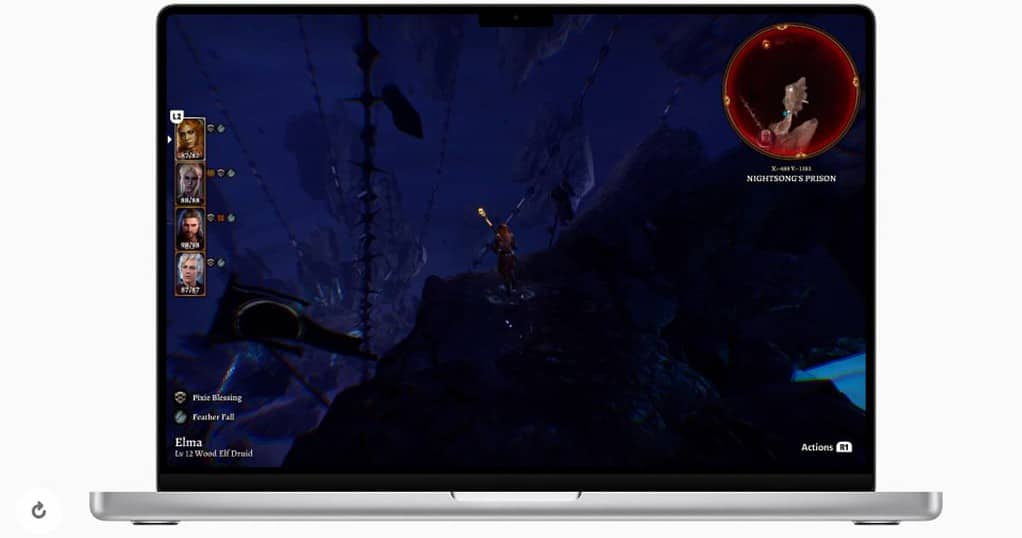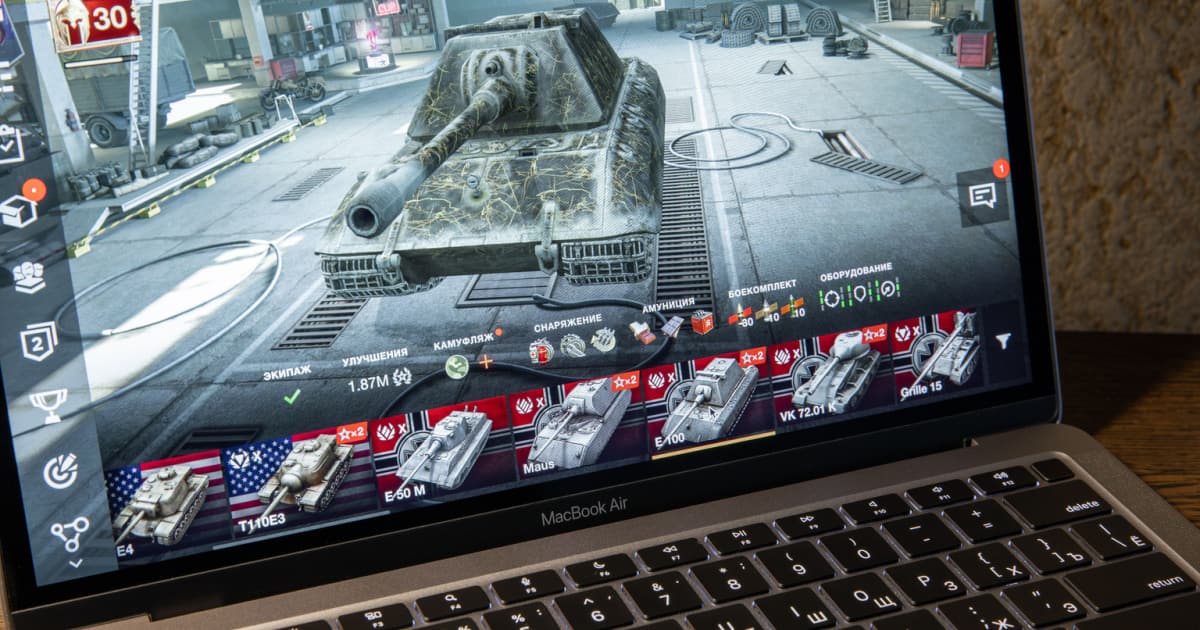During the WWDC 24 macOS announcement, Apple was keen to share some news about Mac gaming. This year’s Game Porting Toolkit iteration isn’t as revolutionary as the first version, but it’s significant as well.
Apple is also introducing new partnerships. Ubisoft is one of a few high-level names joining the party, like what Hideo Kojima and Capcom did in 2023. It’s more than just announcing titles for macOS, you see — they’re endorsing Apple’s computers as flagship gaming machines.
It’s Time To Admit Macs Pack a Punch, Too
To be fair, why shouldn’t Macs be considered flagship gaming machines? An M3 Max MacBook Pro isn’t neck and neck with a high-end Razer laptop, for instance, that’s true. But it’s not shamefully behind, either.
There are other factors to consider, like price, portability, battery life, and so on. Some will weigh in favor of traditional gaming brands, while others will have Apple’s computers as clear winners.
In the end, it’s a matter of personal taste. But, really, that’s the point: a Mac is now a feasible choice for a gaming computer. The only thing really keeping this back from a realistic scenario is the low availability of titles. And that’s changing, too.
Gaming on Macs Has Always Been a Matter of Willing To

What if I told you that gaming on a Mac has been possible for quite some time? I have been doing that for over a decade, and that’s coming from someone who was actually late to the party.
CrossOver (which is the base of Apple’s Game Porting Toolkit), PlayOnMac, Wine, Cider… There has been no shortage of game porting possibilities through the years. Since macOS is considerably lighter on hardware than Windows, games may run fine even factoring in the emulation’s expected performance loss.
I remember playing Skyrim on a White Unibody MacBook a few weeks after the game’s announcement. I was playing at 640×480, with single-digit FPS, and even with quality so low Minecraft felt more realistic. Limitations existed back then, but still: I was running an AAA game on a computer that, when released two years prior, was an entry-level offering. And I was running it on an OS it wasn’t developed for, with severe performance cuts.
I played many more games on that Mac. A few Need for Speed titles, some Call of Duty, Spore, and Sid Meyer’s Civilization. I even went to a Battlefield 1942 LAN party once — I was the only Mac user, but everything worked just fine.
Undeniably, Apple has taken its sweet time to seriously consider Mac gaming as something viable. Some people will remember when Macs’ product pages featured Boot Camp more prominently than native titles in the “gaming” section.
As the saying goes: if you want to, you’ll find a way. If you don’t, you’ll find an excuse. Mac users have always found a way to play their favorite titles, and that way rarely relied on Boot Camp. We may have played despite Apple, not thanks to Apple, but we played nonetheless.
Linux Gamers and Mac Gamers Strengthen Each Other
Most of the ways of porting Windows games to Mac I mentioned above weren’t made for Macs at first. They were usually tools created by Linux enthusiasts and later adapted for macOS (or Mac OS X, back then).
And Linux gaming is another field where things have been changing rapidly. The Steam Deck and the Proton compatibility layer made things mostly seamless for the end user. Much like macOS, most Linux distributions mitigate the performance loss by being lighter than Windows.
But really, the most important thing here is putting an end to the Windows monopoly on gaming. It’s somewhat ironic, given Apple’s history with the “walled garden” approach, but gaming on Mac is defending the freedom of choice. This is also true of gaming on Linux.
The Apple Silicon Was a Clear Sign of Times Changing

Two things, in my opinion, were the strongest signs of how Apple had finally understood the potential of Mac gaming. The first was Apple Arcade, and the second was the possibility of installing iPad apps on Apple Silicon Macs.
Apple Arcade is largely aimed at casual gaming, far from hardcore-oriented competitors like Xbox Game Pass or GeForce Now. But when you think of it, most of these are operated by companies with a focus on gaming. Besides the above: Amazon Luna (Amazon also owns Twitch), PlayStation Plus, Nintendo Switch Online, EA Play, Ubisoft+, and so on.
App cross-compatibility between iOS/iPadOS and macOS, while not restricted to gaming, deeply benefits this field. Thanks to that, you can access a library of high-quality titles, with stunning graphics, fully compatible with Apple Silicon. The best part: Apple didn’t need to make any additional effort, nor did the developers.
This created a way to showcase what Apple Silicon could do, from its early days, regarding games. And that strengthens the argument that Macs are now, more than ever, completely capable gaming machines.
The Future of Mac Gaming Looks Bright (in More Ways Than One)
It’s general knowledge that Apple arrives late to some parties. In the case of gaming, users spent years complaining that it was, at most, an afterthought in the company’s products.
In WWDC 22, though, it went deeper into gaming with the Metal 3 API. The following year, it announced the Gaming Porting Toolkit. In 2024, the technology reaches version 2, not only as a testing sandbox, but as part of the porting workflow.
This kind of development shows Apple is finally paying attention to the idea of Mac as a gaming platform. If iPads and iPhones have been that for over a decade, why should they be different from the company’s computers?
Mac users, now, have a bright gaming future to look forward to. Even better-looking, considering the M3 chips support ray tracing.
